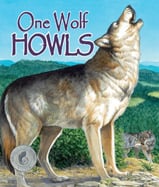Alignment to Standards for FL

| Grade | Number | Standard |
|---|---|---|
| 1 | SC.1.E.6.1 | Recognize that water, rocks, soil, and living organisms are found on Earths surface. |
| 1 | SC.1.L.16.1 | Make observations that plants and animals closely resemble their parents, but variations exist among individuals within a population. |
| 1 | SC.1.L.17.1 | Through observation, recognize that all plants and animals, including humans, need the basic necessities of air, water, food, and space. |
| 2 | SC.2.E.7.1 | Compare and describe changing patterns in nature that repeat themselves, such as weather conditions including temperature and precipitation, day to day and season to season. |
| 2 | SC.2.L.16.1 | Observe and describe major stages in the life cycles of plants and animals, including beans and butterflies. |
| 2 | SS.2.A.3.1 | Identify terms and designations of time sequence. |
| 3 | SC.3.L.17.1 | Describe how animals and plants respond to changing seasons. |
| 4 | SC.4.L.16.2 | Explain that although characteristics of plants and animals are inherited, some characteristics can be affected by the environment. |
| 4 | SC.4.L.16.3 | Recognize that animal behaviors may be shaped by heredity and learning. |
| 4 | SC.4.L.17.2 | Explain that animals, including humans, cannot make their own food and that when animals eat plants or other animals, the energy stored in the food source is passed to them. |
| 5 | SC.5.E.7.3 | Recognize how air temperature, barometric pressure, humidity, wind speed and direction, and precipitation determine the weather in a particular place and time. |
| 5 | SC.5.E.7.4 | various forms of precipitation (rain, snow, sleet, and hail), making connections to the weather in a particular place and time. |
| K | SC.K.L.14.3 | Observe plants and animals, describe how they are alike and how they are different in the way they look and in the things they do. |
| K | SS.K.A.3.2 | Explain that calendars represent days of the week and months of the year. |
| K | SS.K.G.3.3 | seasonal weather changes, and illustrate how weather affects people and the environment. |